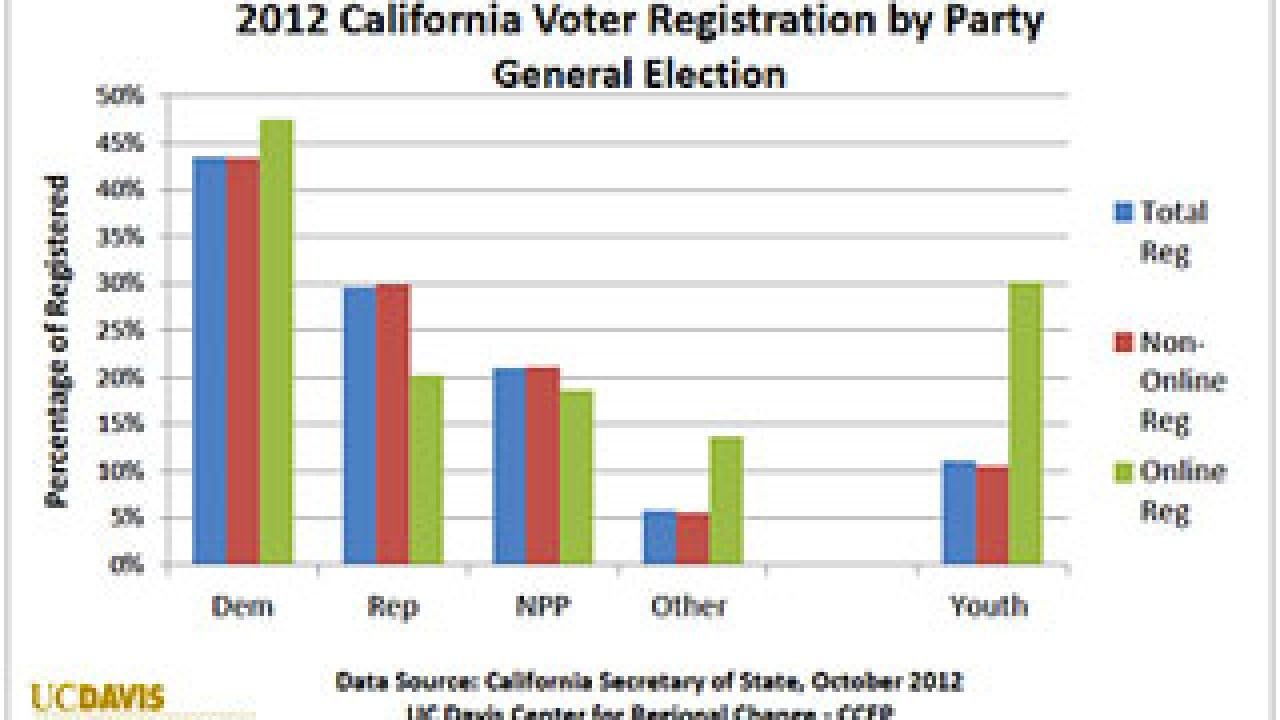Young adults in California registered to vote in record numbers in 2012, especially online, driving a trend toward no party affiliation, according to a new University of California, Davis, study.
With the implementation of online registration a month before the November election, registration among 18- to 24-year-olds in California increased 14 percent statewide compared with the 2008 general election. Young voters now make up 11 percent of the state’s electorate.
Of the 244,049 new California youth registrants in 2012, 154,054 registered online — 63 percent. Those stating “no party preference” were the second-largest group after those identifying as Democrats. Young adults are the only group of California voters among whom fewer than 40 percent are registered as Democratic.
“The rising youth electorate in California may not mean future growth in Democratic party registration rolls as some analysts have predicted,” said Mindy Romero, a researcher at the UC Davis Center for Regional Change and author of the study. “Instead, if this trend continues, a younger electorate will mean even smaller percentages of both registered Democrats and Republicans.”
In 15 counties, including Orange and San Diego, young adults who registered with “no political preference” outnumbered those who said they were Democrat or Republican. In 34 counties, new “NPP” voters were the second-largest group to register, following Democratic voters; these counties included Alameda, San Francisco, San Mateo, Santa Clara and Ventura counties.
The study also looked at online registration for the state’s overall electorate. Statewide, new voters who registered online leaned young and Democratic.
Young adults made up 30 percent of those who registered online statewide. Democrats represented 47.5 percent.
Online registration, however, accounted for only 2.8 percent of overall registration.
“Although online registration accounted for about 500,000 new registered voters, it appears to have only modestly boosted total voter registration for the general electorate in the November election, Romero said.
“However, looking only at those registrants that registered after online registration was made available (Sept. 19), 49.8 percent of general registrants and 49.5 percent of young adult registrants registered via this method — meaning that online became the dominant method of registration for Californians once it was implemented. As online registration becomes a more common registration method going forward, youth dominance of this method could provide another pathway to increasing influence on the political makeup of the electorate,” she said.
Statewide, 76.7 percent of eligible voters registered in 2012, an increase of 2 percent over 2008.
The study is the third in a series of reports released on election issues by the California Civic Engagement Project, a new nonpartisan data repository and research initiative of the UC Davis Center for Regional Change. The study uses registration records from the California Secretary of State’s Office.
The study, “California’s 2012 Electorate: The Impact of Youth and Online Voter Registration,” is available at the UC Davis California Civic Engagement Project website.
Media Resources
Pat Bailey, Research news (emphasis: agricultural and nutritional sciences, and veterinary medicine), 530-219-9640, pjbailey@ucdavis.edu
Mindy Romero, Center for Regional Change, 530-665-3010, msromero@ucdavis.edu
